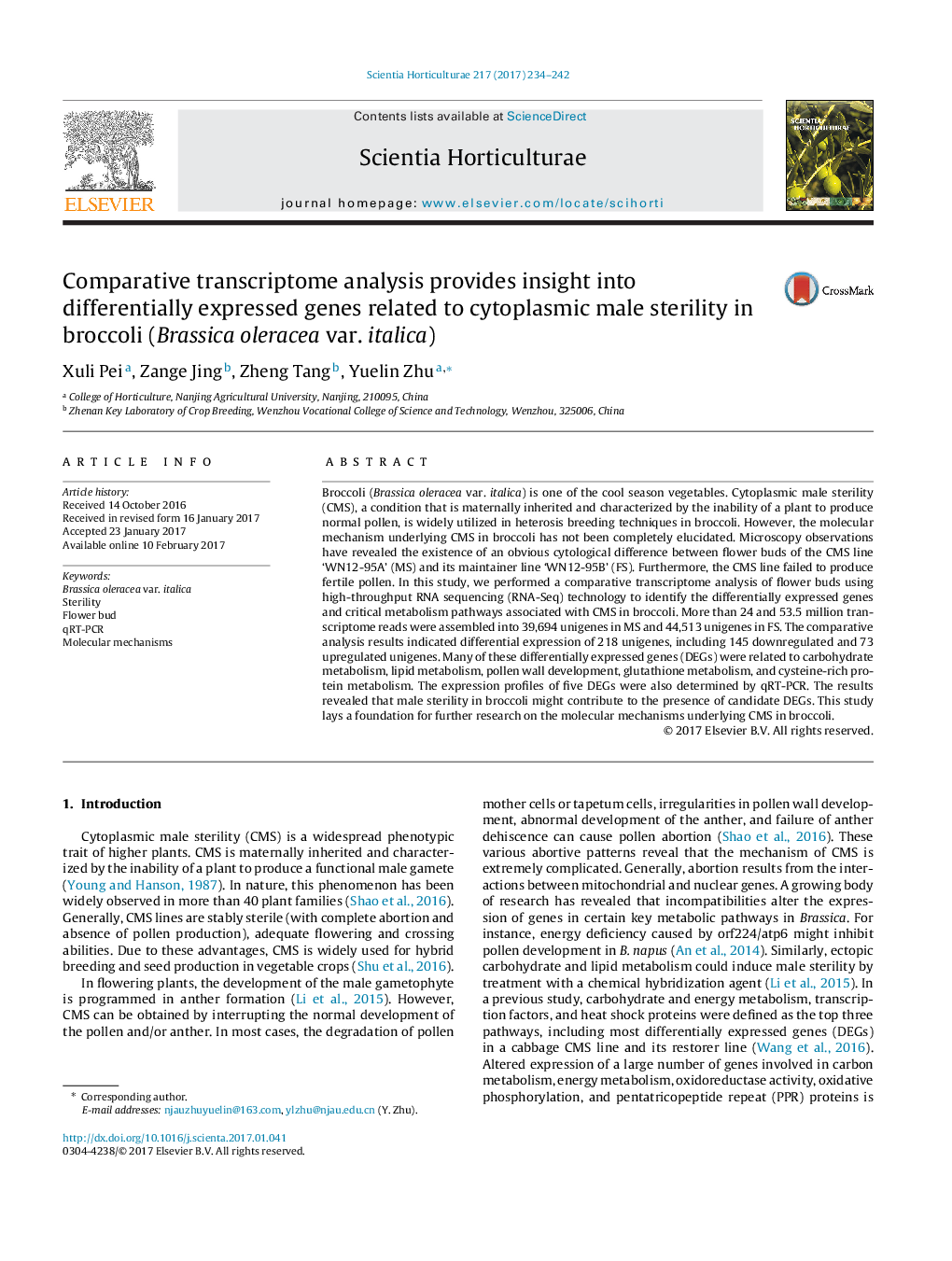| Article ID | Journal | Published Year | Pages | File Type |
|---|---|---|---|---|
| 5769695 | Scientia Horticulturae | 2017 | 9 Pages |
â¢A comparative transcriptome analysis of flower buds was performed using high-throughput RNA sequencing (RNA-Seq) technology in broccoli.â¢The differentially expressed genes and critical metabolism pathways associated with CMS were identified between the CMS line 'WN12-95A' (MS) and its maintainer line 'WN12-95B' (FS).â¢The results revealed that male sterility in broccoli might contribute to the presence of candidate differentially expressed genes.
Broccoli (Brassica oleracea var. italica) is one of the cool season vegetables. Cytoplasmic male sterility (CMS), a condition that is maternally inherited and characterized by the inability of a plant to produce normal pollen, is widely utilized in heterosis breeding techniques in broccoli. However, the molecular mechanism underlying CMS in broccoli has not been completely elucidated. Microscopy observations have revealed the existence of an obvious cytological difference between flower buds of the CMS line 'WN12-95A' (MS) and its maintainer line 'WN12-95B' (FS). Furthermore, the CMS line failed to produce fertile pollen. In this study, we performed a comparative transcriptome analysis of flower buds using high-throughput RNA sequencing (RNA-Seq) technology to identify the differentially expressed genes and critical metabolism pathways associated with CMS in broccoli. More than 24 and 53.5 million transcriptome reads were assembled into 39,694 unigenes in MS and 44,513 unigenes in FS. The comparative analysis results indicated differential expression of 218 unigenes, including 145 downregulated and 73 upregulated unigenes. Many of these differentially expressed genes (DEGs) were related to carbohydrate metabolism, lipid metabolism, pollen wall development, glutathione metabolism, and cysteine-rich protein metabolism. The expression profiles of five DEGs were also determined by qRT-PCR. The results revealed that male sterility in broccoli might contribute to the presence of candidate DEGs. This study lays a foundation for further research on the molecular mechanisms underlying CMS in broccoli.
